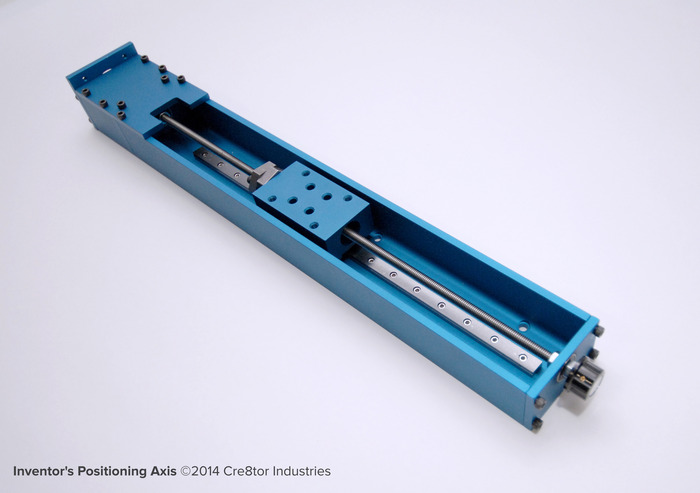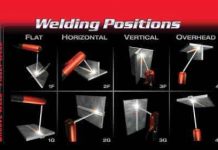Mechanical Properties
Under the action of various kinds of forces, the behavior of the material is studied that measures the strength and lasting characteristic of a material in service. The mechanical properties of materials are of great industrial importance in the design of tools, machines and structures. Theses properties are structure sensitive in the sense that they depend upon the crystal structure and its bonding forces, and especially upon the nature and behavior of the imperfections which- exist within the crystal itself or at the grain boundaries. The mechanical properties of the metals are those which are associated with the ability of the material to resist mechanical forces and load. The main mechanical properties of the metal are strength, stiffness, elasticity, plasticity, ductility, malleability, toughness, brittleness, hardness, formability, castability and weldability. These properties can be well understood with help of tensile test and stress strain diagram. The few important and useful mechanical properties are explained below.
1. Elasticity
It is defined as the property of a material to regain its original shape after deformation when the external forces are removed. It can also be referred as the power of material to come back to its original position after deformation when the stress or load is removed. It is also called as the tensile property of the material.
2. Proportional limit
It is defined as the maximum stress under which a material will maintain a perfectly uniform rate of strain to stress. Though its value is difficult to measure, yet it can be used as the important applications for building precision instruments, springs, etc.
3. Elastic limit
Many metals can be put under stress slightly above the proportional limit without taking a permanent set. The greatest stress that a material can endure without taking up some permanent set is called elastic limit. Beyond this limit, the metal does not regain its original form and permanent set will occurs.
4. Yield point
At a specific stress, ductile metals particularly ceases, offering resistance to tensile forces. This means, the metals flow and a relatively large permanent set takes place without a noticeable increase in load. This point is called yield point. Certain metals such as mild steel exhibit a definite yield point, in which case the yield stress is simply the stress at this point.
5. Strength
Strength is defined as the ability of a material to resist the externally applied forces with breakdown or yielding. The internal resistance offered by a material to an externally applied force is called stress. The capacity of bearing load by metal and to withstand destruction under the action of external loads is known as strength. The stronger the material the greater the load it can withstand. This property of material therefore determines the ability to withstand stress without failure. Strength varies according to the type of loading. It is always possible to assess tensile, compressive, shearing and torsional strengths. The maximum stress that any material can withstand before destruction is called its ultimate strength. The tenacity of the material is its ultimate strength in tension.
6. Stiffness
It is defined as the ability of a material to resist deformation under stress. The resistance of a material to elastic deformation or deflection is called stiffness or rigidity. A material that suffers slight or very less deformation under load has a high degree of stiffness or rigidity. For instance suspended beams of steel and aluminium may both be strong enough to carry the required load but the aluminium beam will “sag” or deflect further. That means, the steel beam is stiffer or more rigid than aluminium beam. If the material behaves elastically with linear stress-strain relationship under Hooks law, its stiffness is measured by the Young’s modulus of elasticity (E). The higher is the value of the Young’s modulus, the stiffer is the material. In tensile and compressive stress, it is called modulus of stiffness or “modulus of elasticity”; in shear, the modulus of rigidity, and this is usually 40% of the value of Young’s modulus for commonly used materials; in volumetric distortion, the bulk modulus.
7. Plasticity
Plasticity is defined the mechanical property of a material which retains the deformation produced under load permanently. This property of the material is required in forging, in stamping images on coins and in ornamental work. It is the ability or tendency of material to undergo some degree of permanent deformation without its rupture or its failure. Plastic deformation takes place only after the elastic range of material has been exceeded. Such property of material is important in forming, shaping, extruding and many other hot or cold working processes. Materials such as clay, lead, etc. are plastic at room temperature and steel is plastic at forging temperature. This property generally increases with increase in temperature of materials.
8. Ductility
Ductility is termed as the property of a material enabling it to be drawn into wire with the application of tensile load. A ductile material must be strong and plastic. The ductility is usually measured by the terms, percentage elongation and percent reduction in area which is often used as empirical measures of ductility. The materials those possess more than 5% elongation are called as ductile materials. The ductile material commonly used in engineering practice in order of diminishing ductility are mild steel, copper, aluminium, nickel, zinc, tin and lead.
9. Malleability
Malleability is the ability of the material to be flattened into thin sheets under applications of heavy compressive forces without cracking by hot or cold working means. It is a special case of ductility which permits materials to be rolled or hammered into thin sheets. A malleable material should be plastic but it is not essential to be so strong. The malleable materials commonly used in engineering practice in order of diminishing malleability are lead, soft steel, wrought iron, copper and aluminium. Aluminium, copper, tin, lead, steel, etc. are recognized as highly malleable metals.
10. Hardness
Hardness is defined as the ability of a metal to cut another metal. A harder metal can always cut or put impression to the softer metals by virtue of its hardness. It is a very
important property of the metals and has a wide variety of meanings. It embraces many different properties such as resistance to wear, scratching, deformation and machinability etc.
11. Brittleness
Brittleness is the property of a material opposite to ductility. It is the property of breaking of a material with little permanent distortion. The materials having less than 5% elongation under loading behavior are said to be brittle materials. Brittle materials when subjected to tensile loads, snap off without giving any sensible elongation. Glass, cast iron, brass and ceramics are considered as brittle material.
12. Creep
When a metal part when is subjected to a high constant stress at high temperature for a longer period of time, it will undergo a slow and permanent deformation (in form of a crack which may further propagate further towards creep failure) called creep.
13. Formability
It is the property of metals which denotes the ease in its forming in to various shapes and sizes. The different factors that affect the formability are crystal structure of metal, grain size of metal hot and cold working, alloying element present in the parent metal. Metals with smal1 grain size are suitable for shallow forming while metal with size are suitable for heavy forming. Hot working increases formability. Low carbon steel possesses good formability.
14. Castability
Castability is defined as the property of metal, which indicates the ease with it can be casted into different shapes and sizes. Cast iron, aluminium and brass are possessing good castability.
15. Weldability
Weldability is defined as the property of a metal which indicates the two similar or dissimilar metals are joined by fusion with or without the application of pressure and with or without the use of filler metal (welding) efficiently. Metals having weldability in the descending order are iron, steel, cast steels and stainless steels.
Reference Introduction to basic Manufacturing Processes and Workshop Technology by Rajender Singh.














